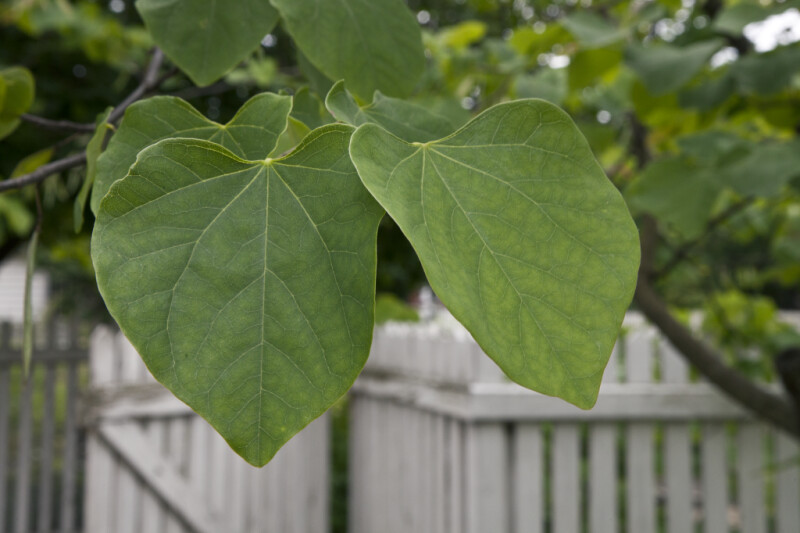
I. Introduction
Trees with heart-shaped leaves are not only visually appealing but also hold significant botanical and ecological importance. Their distinctive leaf shape not only aids in identification but also adds charm to landscapes and provides habitat for various wildlife species. In this article, we delve into the world of trees with heart-shaped leaves, exploring their common species, morphological characteristics, environmental significance, and cultivation.
II. Common Trees with Heart-Shaped Leaves
A. Eastern Redbud (Cercis canadensis)
The Eastern Redbud is a deciduous tree known for its heart-shaped leaves and vibrant pinkish-purple flowers that bloom in early spring before the leaves emerge. Native to North America, this tree thrives in a variety of soil types and growing conditions, making it a popular choice for landscaping and ornamental purposes. Its heart-shaped leaves, typically ranging from 3 to 5 inches in length, are arranged alternately along the branches and feature prominent veins and serrated margins.
B. Silver Linden (Tilia tomentosa)
The Silver Linden, also known as the Silver Lime or European Linden, is a large deciduous tree valued for its heart-shaped leaves and fragrant, pale yellow flowers that attract bees and other pollinators. Native to Europe and Asia, this tree is characterized by its distinctive heart-shaped leaves with silvery undersides, which shimmer in the sunlight. The leaves are arranged alternately along the branches and have serrated margins and prominent veins.
C. White Mulberry (Morus alba)
The White Mulberry is a deciduous tree native to Asia but widely cultivated around the world for its edible fruits and ornamental value. Its heart-shaped leaves are typically glossy green and arranged alternately along the branches. The leaves of the White Mulberry vary in size and texture, with some cultivars featuring deeply lobed or serrated margins. In addition to its culinary uses, the White Mulberry provides habitat for silkworms and other wildlife species.
III. Morphological Characteristics of Heart-Shaped Leaves
A. Leaf Size and Arrangement
Trees with heart-shaped leaves exhibit a range of leaf sizes, with some species producing small, delicate leaves while others have larger, more robust foliage. The leaves are typically arranged alternately along the branches, although some species may have opposite or whorled leaf arrangements. The size and arrangement of the leaves can vary depending on the species, environmental conditions, and genetic factors.
B. Vein Patterns and Margins
The veins and margins of heart-shaped leaves can vary in prominence and texture, adding to the visual appeal of the foliage. Some species have prominent veins that radiate outward from the base of the leaf, while others may have more subtle vein patterns. The margins of heart-shaped leaves may be smooth or serrated, with some species featuring deeply lobed or toothed margins. These variations in vein patterns and margins contribute to the overall diversity and beauty of trees with heart-shaped leaves.
C. Seasonal Changes and Color Variations
Trees with heart-shaped leaves undergo seasonal changes in foliage color and appearance, adding to their ornamental value throughout the year. In spring, many species produce new leaves that emerge in vibrant shades of green, often accompanied by colorful flowers or buds. As the growing season progresses, the foliage may mature to a darker green hue, with some species developing variegated or mottled patterns. In autumn, trees with heart-shaped leaves may undergo dramatic color changes, ranging from yellow and orange to red and purple, before shedding their leaves in preparation for winter dormancy.
IV. Environmental and Ecological Significance of Trees with Heart-Shaped Leaves
A. Habitat Preferences and Growing Conditions
Trees with heart-shaped leaves inhabit a variety of habitats, ranging from temperate forests and woodlands to urban parks and gardens. They exhibit a range of growing conditions preferences, with some species thriving in full sun while others prefer partial shade or moist, well-drained soils. The presence of trees with heart-shaped leaves contributes to overall ecosystem health and biodiversity, providing food, shelter, and habitat for various wildlife species.
B. Wildlife Support and Ecosystem Services
Trees with heart-shaped leaves play a vital role in supporting wildlife populations and providing essential ecosystem services. Their foliage provides food and habitat for birds, mammals, insects, and other wildlife species, contributing to biodiversity and ecological resilience. The flowers, fruits, and seeds of these trees serve as important food sources for pollinators, herbivores, and seed dispersers, helping to maintain healthy ecosystems and food webs. Additionally, the shade and shelter provided by trees with heart-shaped leaves create microhabitats for understory plants and soil organisms, enhancing soil fertility and nutrient cycling.
C. Conservation and Landscape Importance
The conservation of trees with heart-shaped leaves is essential for preserving biodiversity, protecting habitats, and maintaining ecosystem services. Many species of trees with heart-shaped leaves are threatened by habitat loss, deforestation, invasive species, and climate change, highlighting the need for conservation efforts and habitat restoration initiatives. By protecting and restoring natural habitats and incorporating native trees with heart-shaped leaves into urban and suburban landscapes, we can enhance biodiversity, mitigate climate change, and create healthier, more resilient communities.
V. Cultivation and Appreciation of Trees with Heart-Shaped Leaves
A. Landscaping and Ornamental Uses
Trees with heart-shaped leaves are valued for their ornamental beauty and landscape enhancement qualities. They can be used as focal points, specimen trees, or shade trees in residential, commercial, and public landscapes. Their striking foliage, seasonal color changes, and wildlife-friendly characteristics make them popular choices for parks, gardens, and arboretums. Additionally, trees with heart-shaped leaves can be incorporated into mixed plantings, hedgerows, or windbreaks to create visual interest, provide privacy, and enhance the overall aesthetic appeal of outdoor spaces.
B. Educational and Recreational Opportunities
Trees with heart-shaped leaves offer valuable educational and recreational opportunities for people of all ages. Botanical gardens, nature reserves, and arboretums often feature collections of trees with heart-shaped leaves, providing visitors with opportunities to learn about plant diversity, ecology, and conservation. Guided tours, interpretive signage, and educational programs help raise awareness about the ecological importance of trees with heart-shaped leaves and the need for their protection and preservation. Additionally, outdoor recreational activities such as hiking, birdwatching, and photography allow individuals to connect with nature and appreciate the beauty of trees with heart-shaped leaves in their natural habitats.
C. Community Engagement and Stewardship Initiatives
Engaging communities in tree planting and stewardship initiatives is essential for promoting the conservation and appreciation of trees with heart-shaped leaves. Community tree planting events, volunteer programs, and citizen science projects provide opportunities for people to get involved in tree care, habitat restoration, and environmental advocacy efforts. By working together to plant and maintain trees with heart-shaped leaves in parks, schools, neighborhoods, and urban areas, communities can improve air quality, enhance green spaces, and foster a sense of pride and stewardship for the natural world.
In conclusion, trees with heart-shaped leaves are not only visually stunning but also ecologically significant, providing habitat for wildlife, contributing to biodiversity, and enhancing the beauty of natural and urban landscapes. By understanding their morphological characteristics, environmental significance, and cultivation requirements, we can appreciate the vital role that trees with heart-shaped leaves play in sustaining healthy ecosystems and creating vibrant, resilient communities. Through conservation efforts, landscape design, and community engagement, we can ensure the continued presence and appreciation of these botanical treasures for generations to come.


